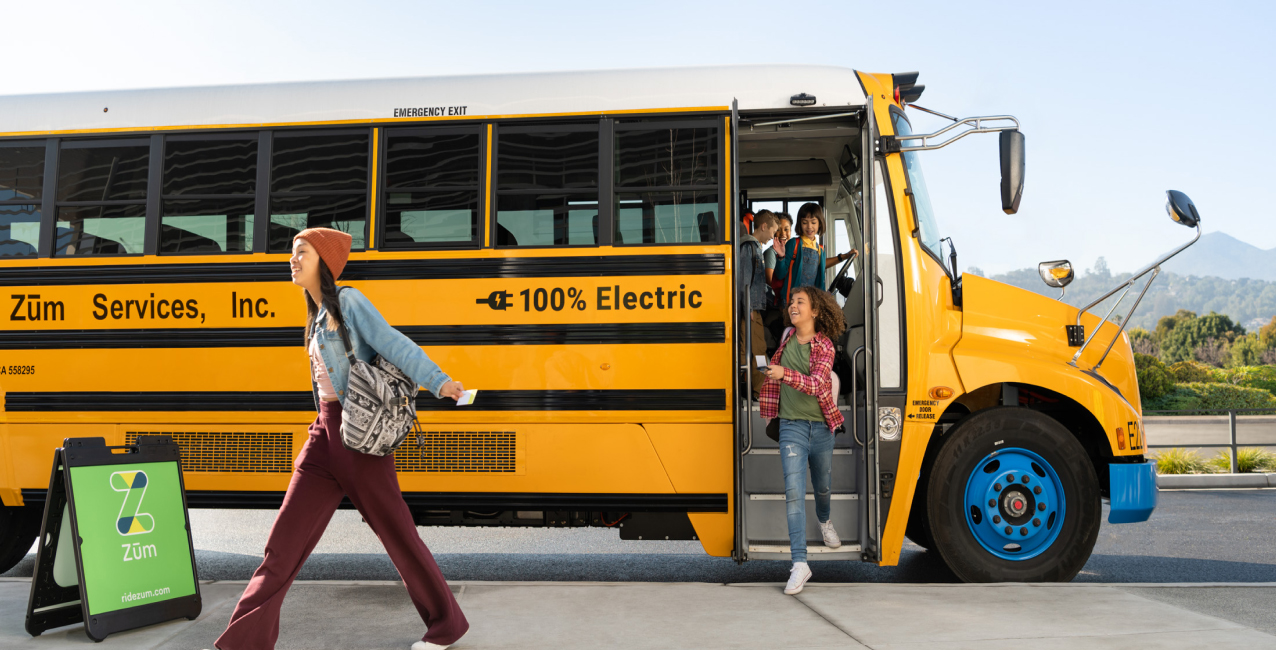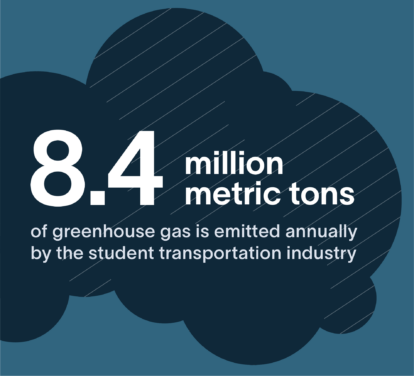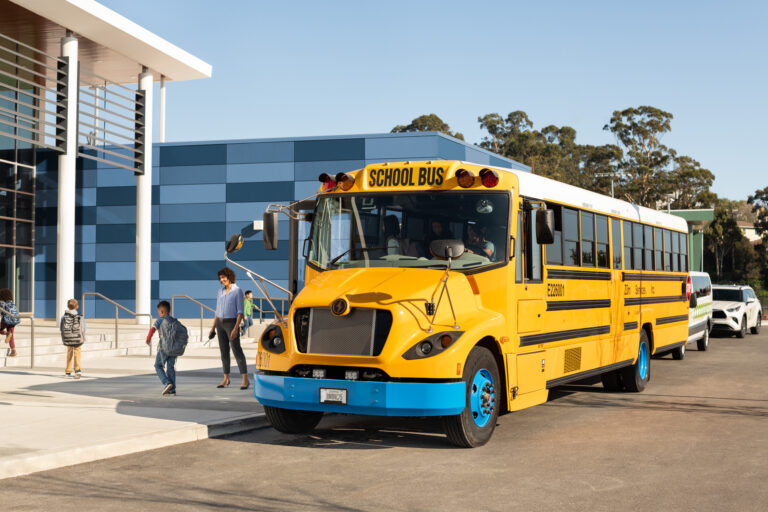
Electric School Buses & the Benefits of an EV-Powered Fleet
Benefit of Electric School Buses
School buses carry millions of children to and from school every single day. And with over 500,000 school buses on the road the impact of the 8.4 million tons per year of greenhouse gas emissions they produce plays a big role in the health of our communities. While we have the potential for greater sustainability in kids getting to and from school, we are still a ways off from achieving it today. The majority of America’s school buses continue to pollute the environment, add to global warming, and put the health of kids and communities at risk. Electric school buses are part of the solution.
Today, only 0.2 % of all America’s buses are completely electric, which means the opportunity for growth is vast and can have a big impact. The benefits of an electric vehicle (EV) school bus fleet range from preventing respiratory diseases to saving thousands of dollars on fuel and maintenance.
Read on to learn more about the electric school bus revolution and its impact on school transportation, your children, and the country at large.

Electric School Buses: Fact or Fiction?
There are many misconceptions when it comes to transitioning to electric vehicles, and misconceptions pertaining to school buses are no exception. The most common fallacy is about battery range and charging, as it’s still somewhat novel from how we’re used to thinking about vehicles. But the reality is, charging and storage technology has improved rapidly from when it first came to market. Electric bus batteries now not only stand up to any sort of extreme weather condition, but they charge faster and hold a charge longer than ever before, with ranges up to and far exceeding the mandate schools have to keep rides under 45 minutes for children.
Another misconception is that they are expensive. Yes, EV is an investment. However, the ongoing benefits of electric vehicles — like dramatically lower (and easier) maintenance costs and Vehicle to Grid savings (V2G, technology that enables energy to be pushed back to the power grid from an EV) — far exceed the upfront costs of making the switch from diesel to electric. And growing demand is actually driving down production costs significantly. At the end of the day, the total cost of operating an EV fleet is recovered within 10-12 years but it’s the benefit to our environment and health of our children which far exceeds the investment.
The shift doesn’t have to be complicated either. Electric bus manufacturers and providers offer training for everyone involved in the process, from drivers to maintenance technicians and district leaders who can all get the right information they need to make a simple and easy transition.
Electric EV Buses vs Diesel Buses
• Up to 250 kW of power and a battery capacity of up to 210 kWh.
• Conversely, diesel buses emit exhaust and inhaling this exhaust can cause respiratory diseases and aggravate asthmatic symptoms, especially in children.
• The EPA classifies diesel exhaust as a carcinogenic cancer-causing agent
• Highly-crowded communities with lots of road traffic face an especially high risk of pollution exposure.
• Replacing the country’s school buses with electric fleets could eliminate 5.3 million tons of greenhouse emissions annually.
• Electric school buses are an environmentally-friendly step towards eliminating heavy-duty, diesel-powered vehicles altogether.
• Electric vehicles require far less maintenance than diesel engines; a single electric bus can cost $4,400 less, per year, in maintenance costs.
• The fuel savings are just a bonus, at nearly $2,000 a year in savings.
• Advancing technology has forced down battery prices.
A Future Powered by EV School Bus Fleets
Sadly, the student transportation industry is responsible for emitting 8.4 million metric tons of greenhouse gas annually, and producing pollution levels that are often 5 to 10 times higher than the surrounding areas. There’s no way around it. We have to make big changes if we want to protect student and driver health, and secure the future for the next generation.
The switch to electric school bus fleets can significantly reduce carbon footprint and make a big environmental impact worldwide. Electric buses, for example, emit 62% less emissions than the average diesel bus. One electric school bus can eliminate 23 tons of GHG a year— that’s like completely taking 5 cars off the road at once.
Electrifying the student transportation system does more than just provide a clean ride. With electric school buses, students are no longer constantly exposed to diesel exhaust and harmful pollution, which dramatically reduces their risk for respiratory diseases like asthma. This reduction in environmental pollution, as well as noise pollution (electric buses are practically silent!) reaps tremendous rewards for children and surrounding communities.
Additionally, the long-term cost savings are huge when districts switch to electric school buses. School districts and tax payers save significantly (thousands of dollars over the life of a vehicle) with reductions in fuel costs and less ongoing maintenance. New buses may mean new skill sets required to accelerate the push towards electric, and that means more jobs and more money in the pockets of the local community.
Student Transportation Change Must Happen Now
The school bus industry is ripe for radical change. If we want to keep our children safe on their way to school and actually secure the future of our planet, we need a different path away from diesel. Electric vehicles are key to disrupting an old-fashioned system and they provide real savings to school districts and communities.
At Zum, we are offsetting 100% of emissions for our entire fleet of vehicles today and are committed to 100% electric vehicles by 2025. We are committed to truly sustainable transportation and the cleanest renewable energy possible. Ready to revolutionize student transportation with an electric school bus fleet? Reach out to Zum to learn more about sustainable solutions to secure your community’s future.

